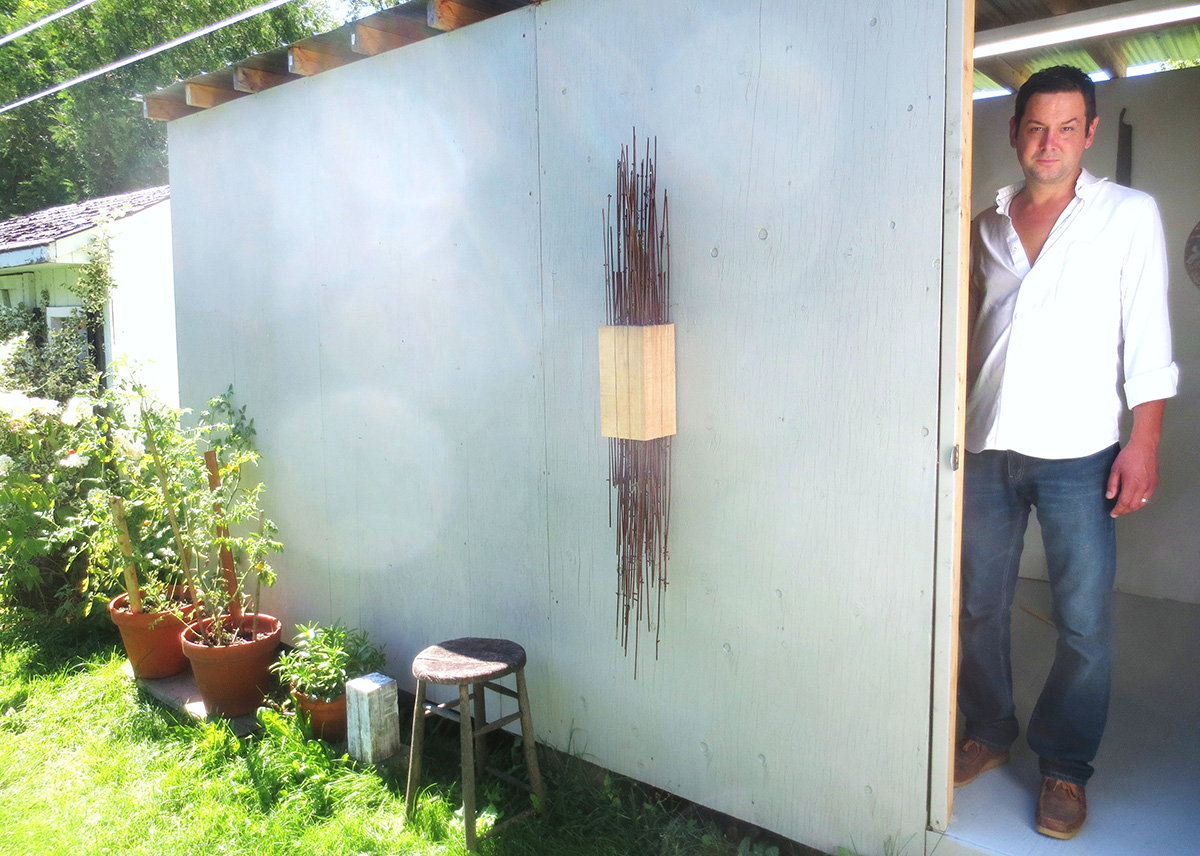
Toronto-based sculptor, painter and installation artist Romas Astrauskas first gained attention with psychedelic, Pop-inspired paintings of rock music icons from the 60s and 70s, like Keith Richard and Marc Bolan. According to the artist, this work sold well and galleries wanted to show it; he could have easily kept making them, but he lost interest in this type of work. A few years ago, Astrauskas’ practice morphed into something else entirely. It became sculptural, and more meditative, but possessing of a quiet power and understated elegance. Using materials that “just fall into” his lap as he travels around the city, Astrauskas creates assemblages that harken back to early-20th Century modernists like Brancusi, who the artist cites as one of his heroes.
Astrauskas’ work has recently appeared in solo and group exhibitions at Galerie Youn in Montreal and No Foundation in Toronto. Magenta visited with the artist in mid-August as he was preparing for a solo exhibition of new work at Katharine Mulherin Art and Projects in Toronto, opening in October.
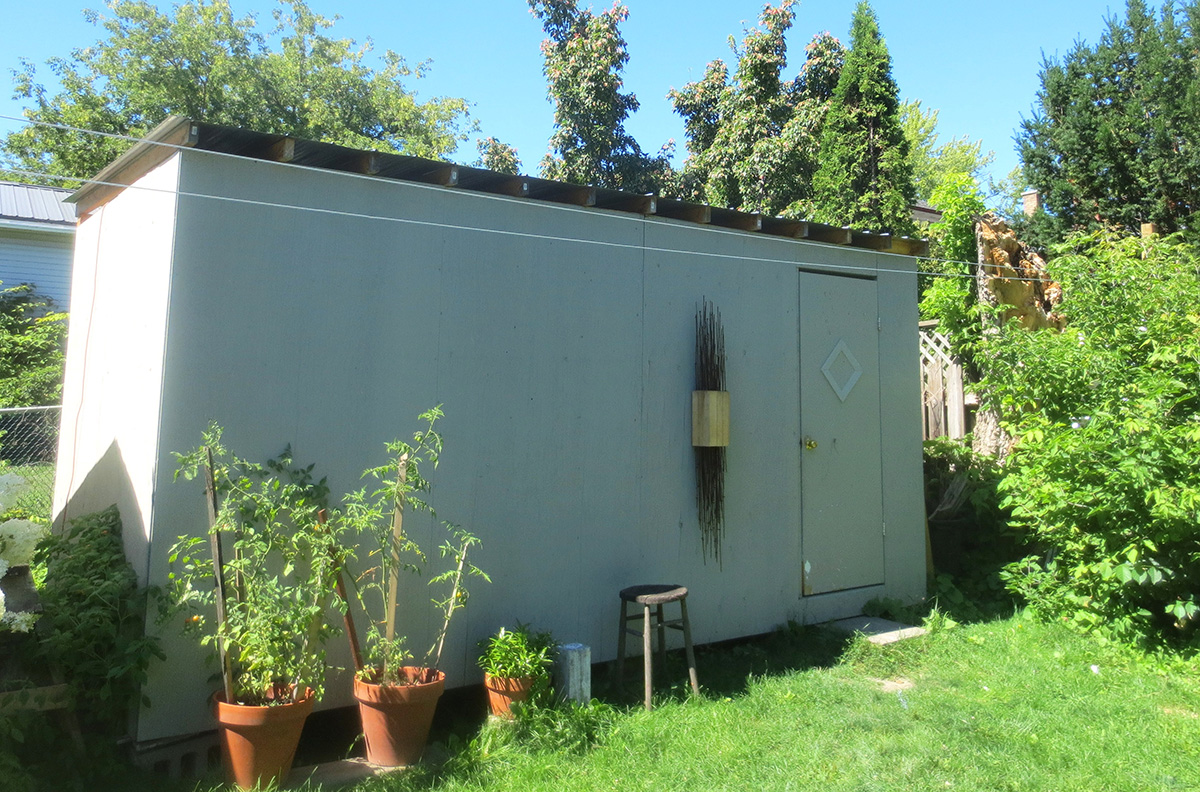
This is my studio. I built it myself for about $1,000, which was a practical decision. I have property, so it just made sense to build something permanent for the cost of one or two month’s rent for a studio space in the city. Before, my studio was in the basement of our house, but the distractions of domestic life and the fact it was a basement prompted my decision to move my operation out back. It’s nice to have a place where I can focus on making work just a few steps away that is quiet and removed. It’s kind of like my Fortress of Solitude. An old tree behind the studio had been menacing us for years, looking like it was going to fall over. I was just about to have it taken it down when it fell over this summer. I was at work, so when my wife called my immediate concern was, did it hit anyone, is anyone dead? No. Did it hit the house? No. Did it hit the studio? No. But, it did crush a bench that my grandmother had owned, flattened it like a pancake. But, I used its shattered fragments to create a wall sculpture. We already had plans to go away for the weekend when it happened, so we just left it, planning on cleaning it up when we got back. When we returned from the weekend, we found it all cut up into smaller pieces for us! A neighbour had come over with his chainsaw. I sometimes feel lousy about the human condition, but that restored my faith in people for awhile.
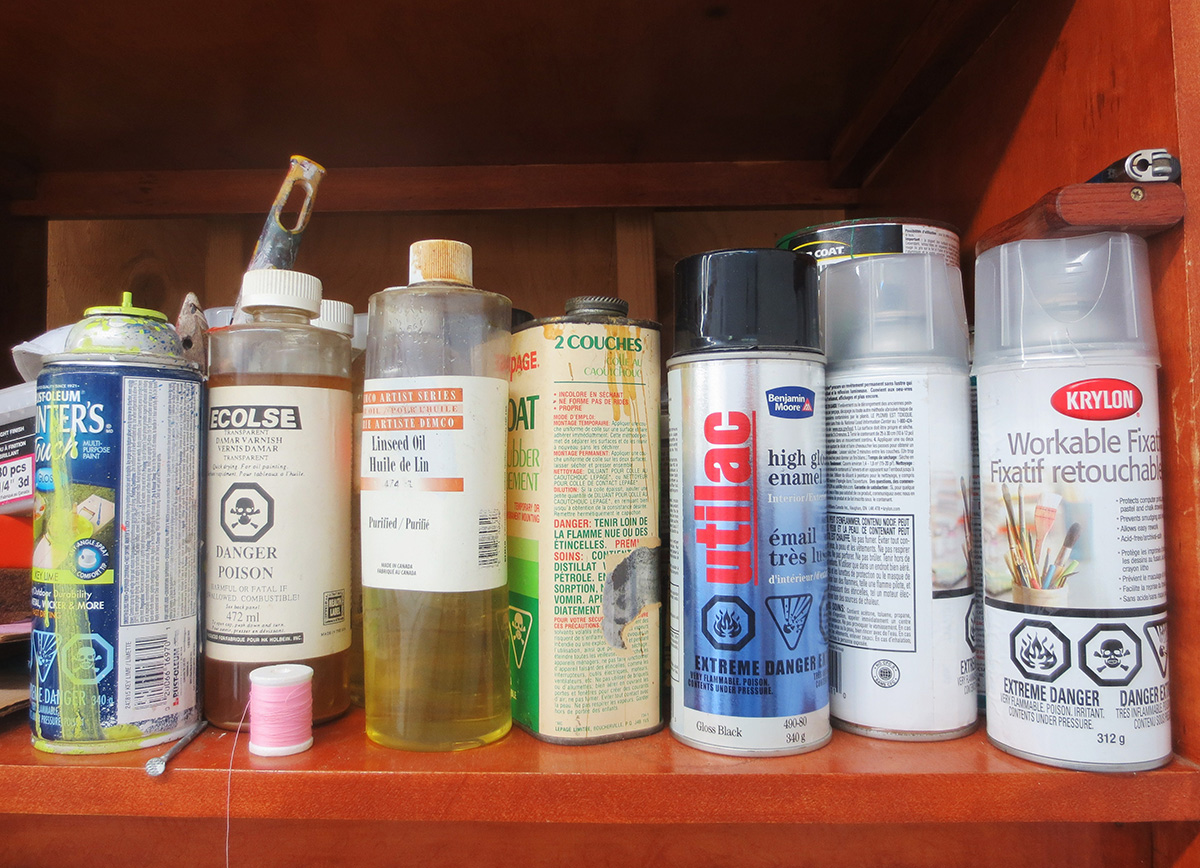
These are some old painting materials that I don’t use anymore. I used to make traditional paintings on canvas with an easel. I trained classically, and I have all those skills. I used to paint from photographs. The paintings sold well and I was being approached by galleries, but I lost interest. The Internet may have had something to do with it… such images started to become ubiquitous online and I began to feel like a human printer. Sometimes, people turn on you when you change what you’re doing as a artist. Some people who bought that earlier work got angry. But, an artist can’t keep making the same thing forever. I’m paraphrasing someone, I can’t remember who, but I think if what you’re doing pleases everyone, then you’re probably doing something wrong.
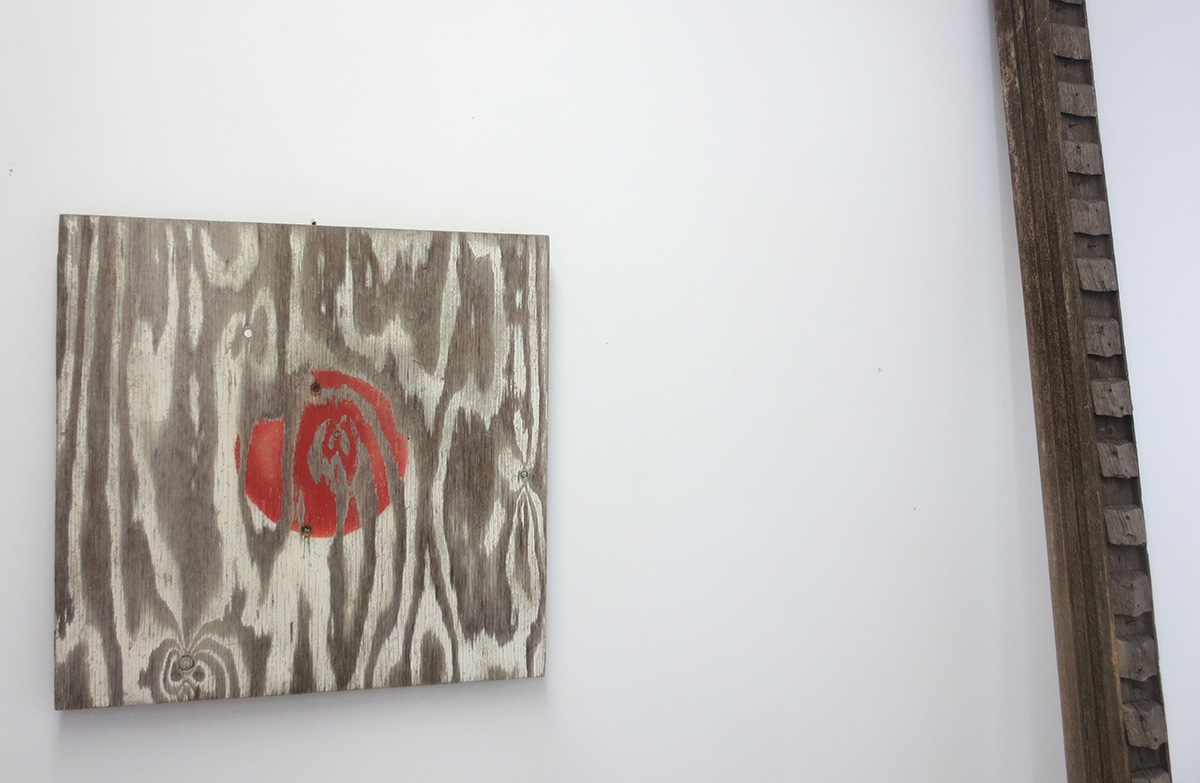
I don’t go for walks on the beach, looking for pieces of driftwood or whatever. My materials come from my day-to-day existence and just fall into my lap. My approach to art-making is somewhat Duchampian, I suppose… the idea of the Readymade and allowing chance to dictate an outcome. The piece on the left is untitled for now, but I see it as a Japanese sun. It is a sign that was nailed to a tree on the side of a road headed to Georgian Bay. At one time, it was obviously painted white with a bright red circle. I saw it over the course of 30 years of trips up north with my parents. Even driving by in the car at 100 mph, it always caught my attention. The last time I drove by it, I pulled over and took it off the tree… it’s so beat up that I’m sure it wasn’t serving a purpose anymore. It is this completely forgotten thing that no one wanted, but I wanted to bring attention to it. Now that I have it in the studio, it makes me think of many things… neglect and the passage of time. Beside it is an old railing that was sitting in my grandmother’s basement for 30 or 40 years. It looks like a ladder, but it also reminded me of a lot of modern art that I like, like Brancusi. I thought it was already interesting to look at, so I haven’t done anything to it.
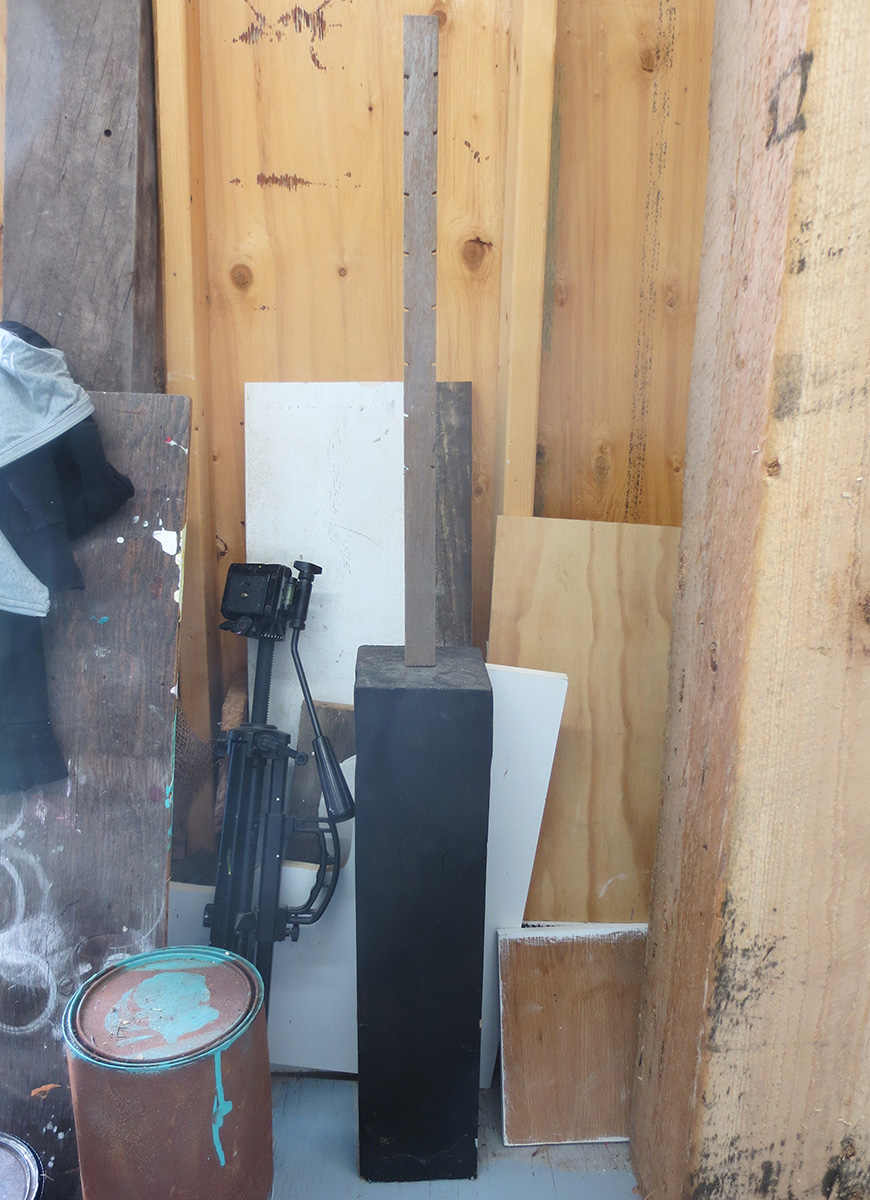
I’m attracted to anything that has an interesting surface or patina. When I’m in the mood, I’ll go to the studio and start moving things around and when things come together, they come together. It just has to feel natural, not forced. Take the piece in the middle of this picture. It wasn’t feeling right. It needed a different base. Shortly after this picture was taken, I found the perfect base for it in a pile of junk on the side of the road when I was driving through the neighbourhood. I don’t want to sound corny, but sometimes things just fall into place and it works. You just need the right attitude: be open to just letting things happen. I try not to let my ego inform my work too much, which is why I don’t make big interventions. I like the idea of “nature” telling me what to do and not the other way around. I usually leave the materials in the state in which I found them because I think the incidental is usually more interesting than the intentional.
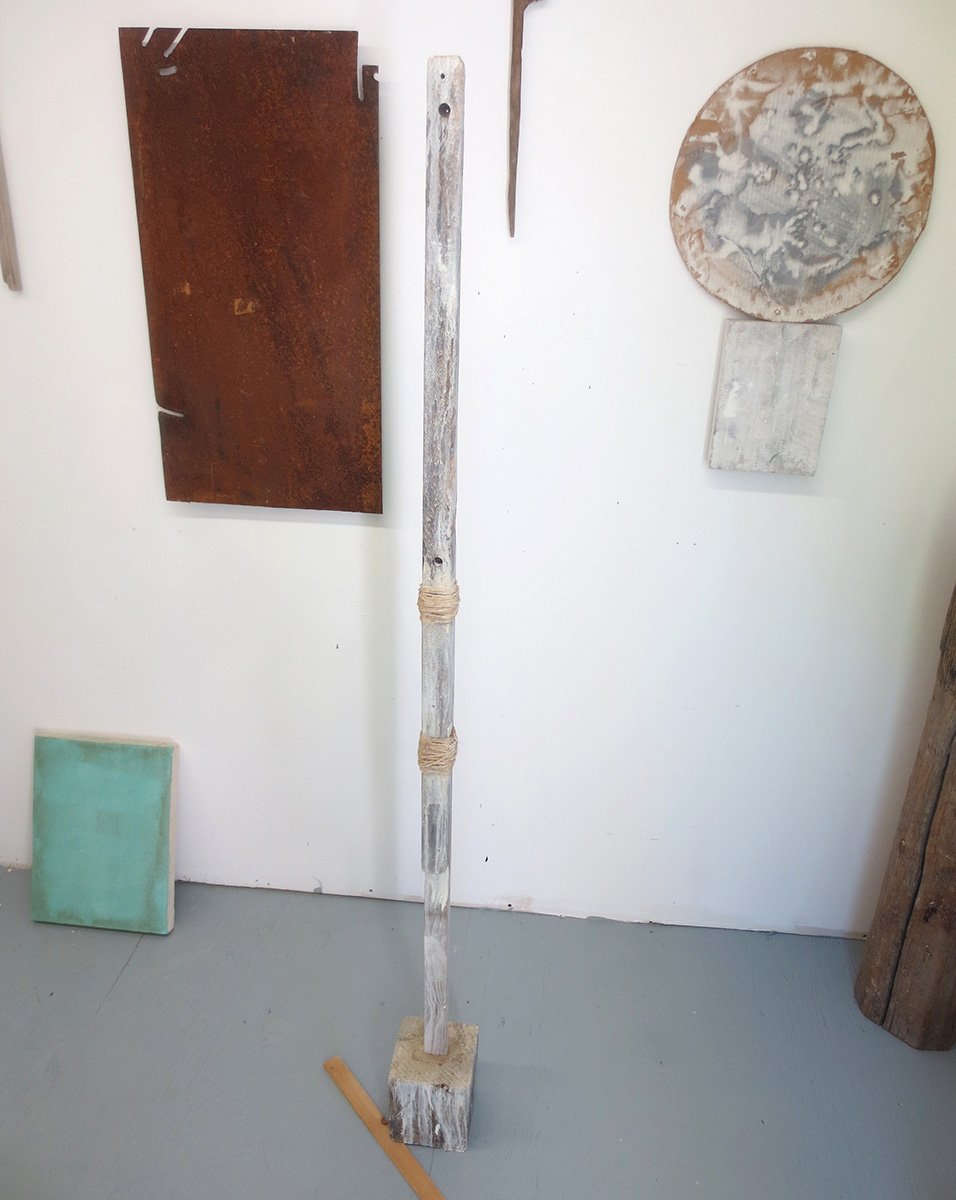
These are nice shots, and tell a story about the materiality of my work. These are pieces for the upcoming show at Katherine Mulherin. Again, I like the patina and worn quality and the physicality of the materials in these pieces. The materials and colours feel visceral and present. The little turquoise piece in the corner of the first picture was some paint I had left over from a job. I coated an old canvas with the colour and a few days later applied some “dirty” varnish, which I rubbed when partially dry with a varsol-soaked rag. I love turquoise as a colour. Whenever I see it, it appears to me as something with an internal glow or hum, like it has it’s own special energy. It was just a bit of serendipity with some paint and varnish. The steel plate was something I just found in my dad’s garage. I thought it was just an interesting thing to look at, with the rusted surface, random notches and cut-out areas. I’m strongly attracted to the early fifties output of Twombly and Rauschenberg when I’m making this work. Their art feels basic and elemental, and discovering it gave me permission to do this kind of work.
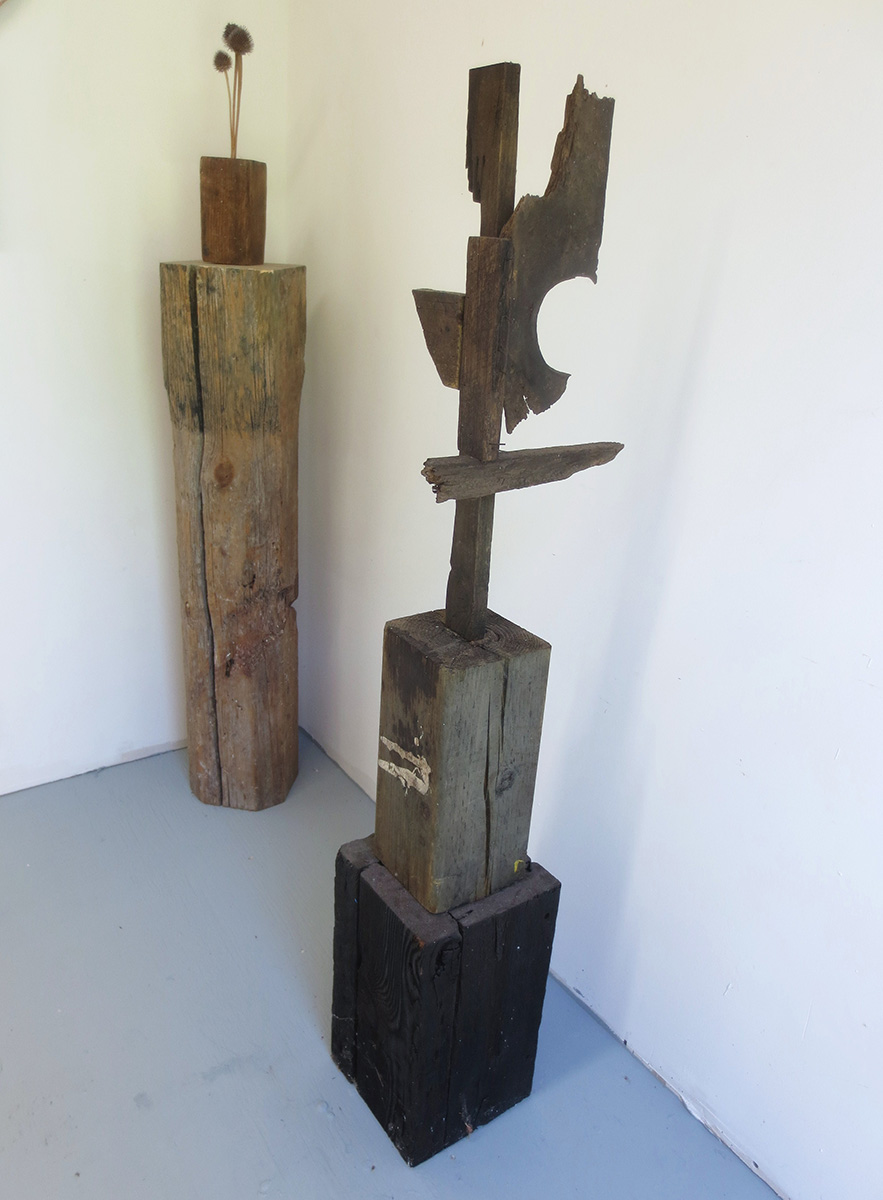
I was recently reading a book about West African art. The West Africans felt that the most powerful objects were those that needed the least work to turn them into something representational. For example, a piece of wood that already resembled an animal was more valuable, powerful, mystical than a piece of wood that had been carved to look like an animal. In a similar way, I’m trying to focus attention on things that you wouldn’t normally look at, but have these values that have become part of them through natural processes. To put it another way, I don’t use my materials to make a window into a reality; these materials and objects are our reality. I could easily start complaining about how too many people wander around, taking in the world through a Smartphone screen, but I do think we are losing our connection to basic things around us. This really is what my work is about – getting back to basics and taking the time to look at things that are easily overlooked and not being constantly distracted.
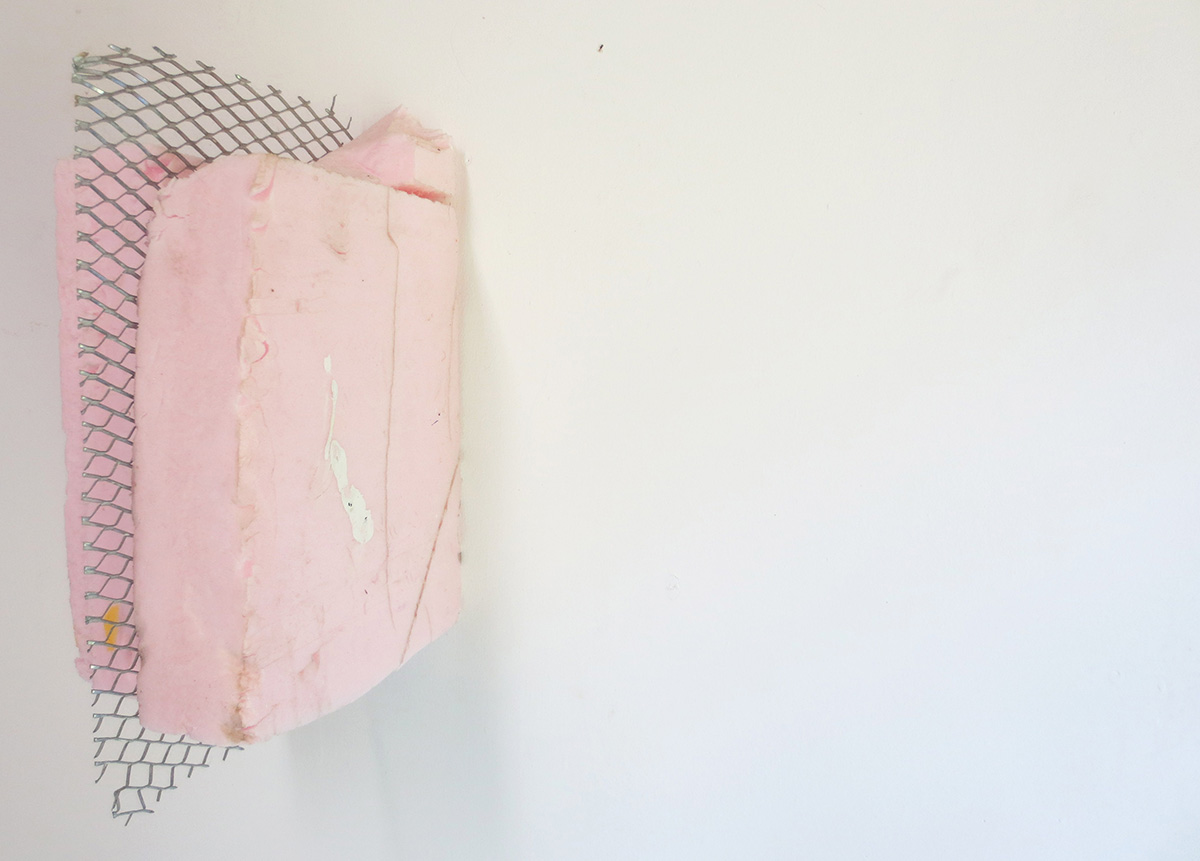
This is another piece for the upcoming show. I don’t think about how my sculptures will be interpreted by viewers. A number of people who’ve been by the studio said this piece made them think of a vagina dentata! That was a bit embarrassing because I didn’t have those thoughts at all! I thought it was just a nice contrast of materials – the sharp and soft forms. But, I’m creating a field for viewers to project on if they have the patience to just look. People spend so much time finding complicated ways to entertain themselves, but looking at very simple things can be entertaining, too.
Romas Astrauskas’ solo exhibition, An Antidote For Fear, opens in October 2015 at Katharine Mulherin Art and Projects in Toronto.
Bill Clarke was the Executive Editor of Magenta Magazine Online from its inception in September 2009 until May 2017. His writing has been published in Modern Painters, Art Review, Canadian Art, Artnews and several other publications. In January 2017, he assumed the position of associate director at Angell Gallery in Toronto.
artist installation Katharine Mulherin Art and Projects painting Romas Astrauskas sculpture studio Toronto



